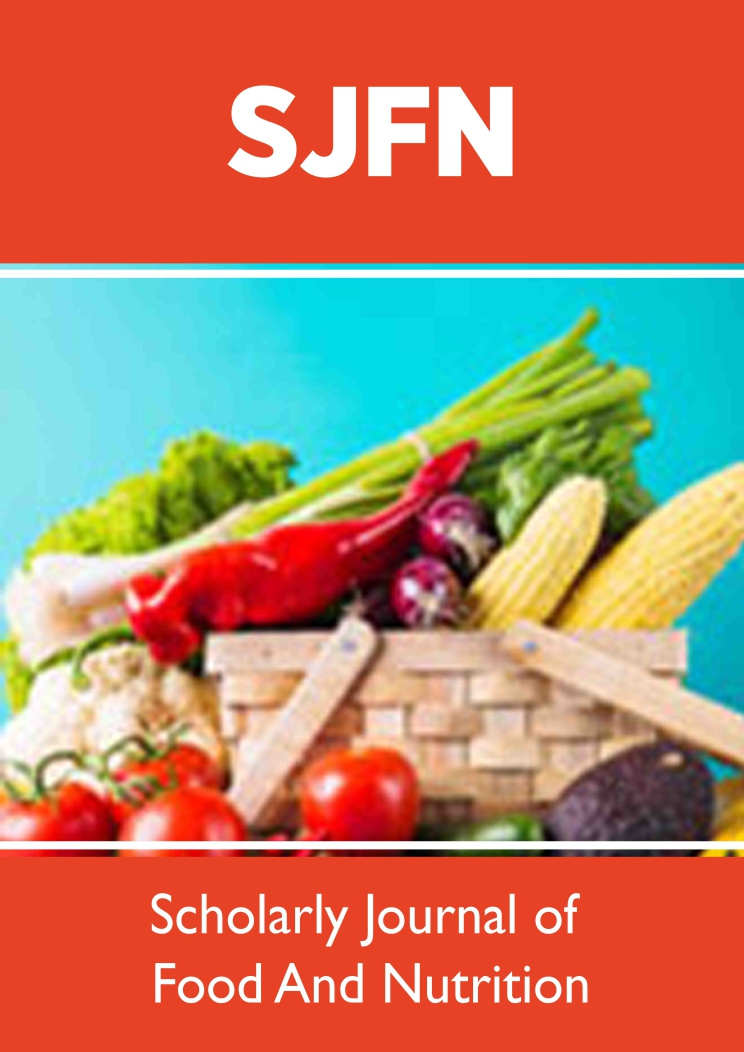-
Research ArticleView abstract
 PDF
PDF
 Full text
This study evaluated the effect of breed on growth performance, meat quality and carcass characteristics in rabbits. Forty- eight (48) rabbits of six commercial rabbit breeds [Chinchilla giganta (CHIN), New Zealand White (NZW), New Zealand Red (NZR), Californian (CAL), American sable (SAB), and Cinnamon (CIN)] were used in this study. The rabbits were randomly selected at the weaning stage...... ReadMore
Full text
This study evaluated the effect of breed on growth performance, meat quality and carcass characteristics in rabbits. Forty- eight (48) rabbits of six commercial rabbit breeds [Chinchilla giganta (CHIN), New Zealand White (NZW), New Zealand Red (NZR), Californian (CAL), American sable (SAB), and Cinnamon (CIN)] were used in this study. The rabbits were randomly selected at the weaning stage...... ReadMore -
Research ArticleView abstract
 PDF
PDF
 Full text
The aim of the study was to measure the average mineral concentration of Ca, P, Se and as in a mushroom known as C. cibarius together with soil on which the mushroom grow so as to determine the bio-absorption of mineral elements as well as the filtration capacity of heavy metals..... ReadMore
Full text
The aim of the study was to measure the average mineral concentration of Ca, P, Se and as in a mushroom known as C. cibarius together with soil on which the mushroom grow so as to determine the bio-absorption of mineral elements as well as the filtration capacity of heavy metals..... ReadMore -
Research ArticleView abstract
 PDF
PDF
 Full text
This research evaluated the hypocholesterolemic impacts of pumpkin kernel and defatted meal in mice using three different types of pumpkin seeds: two Egyptian varieties (Kafr Saad and Kafr Al-Battikh) and a Chinese variety called Hongli. Six groups of mice were formed: a normal control group (NC),..... ReadMore
Full text
This research evaluated the hypocholesterolemic impacts of pumpkin kernel and defatted meal in mice using three different types of pumpkin seeds: two Egyptian varieties (Kafr Saad and Kafr Al-Battikh) and a Chinese variety called Hongli. Six groups of mice were formed: a normal control group (NC),..... ReadMore -
Research ArticleView abstract
 PDF
PDF
 Full text
Growth performance and nutrient utilization of Nile tilapia fed processed duckweed meal were evaluated. Blanching and sun- drying were employed as the processing methods. The blanched and sun-dried duckweed meals were used to replaced toasted soybean meal in the diets of Nile tilapia at 25%, 50%, 75%, and 100% each. Nine iso-proteinous diets were formulated using the least cost feed formulation software...... ReadMore
Full text
Growth performance and nutrient utilization of Nile tilapia fed processed duckweed meal were evaluated. Blanching and sun- drying were employed as the processing methods. The blanched and sun-dried duckweed meals were used to replaced toasted soybean meal in the diets of Nile tilapia at 25%, 50%, 75%, and 100% each. Nine iso-proteinous diets were formulated using the least cost feed formulation software...... ReadMore -
Research ArticleView abstract
 PDF
PDF
 Full text
The youth soccer generally players undergo a rapid growth and maturational changes with physiological, anatomical, and biological changes [1] and over the years, they can optimize physiological demands results in their athletic performance improve...... ReadMore
Full text
The youth soccer generally players undergo a rapid growth and maturational changes with physiological, anatomical, and biological changes [1] and over the years, they can optimize physiological demands results in their athletic performance improve...... ReadMore -
Research ArticleView abstract
 PDF
PDF
 Full text
This project aimed at establishing the presence of bacteria and parasitic ova, cysts, larvae and trophozites on salad vegetables (cabbage and lettuce) sold in Iruekpen Market. Samples were collected from different traders in the Iruekpen market. The samples were analysed..... ReadMore
Full text
This project aimed at establishing the presence of bacteria and parasitic ova, cysts, larvae and trophozites on salad vegetables (cabbage and lettuce) sold in Iruekpen Market. Samples were collected from different traders in the Iruekpen market. The samples were analysed..... ReadMore -
Short CommunicationView abstract
 PDF
PDF
 Full text
Healthy diet refers to intake of certain nutrients that support healthy life and extend lifespan. PubMed search for “healthy diet” reveals a fast-growing interest to this issue during the last few decades...... ReadMore
Full text
Healthy diet refers to intake of certain nutrients that support healthy life and extend lifespan. PubMed search for “healthy diet” reveals a fast-growing interest to this issue during the last few decades...... ReadMore -
Research ArticleView abstract
 PDF
PDF
 Full text
The study investigated the effect of cooking on the proximate and mineral composition of turkey berry. The proximate composition of turkey berry was affected by cooking specifically boiling. The moisture content of turkey berry increased significantly when the heat..... ReadMore
Full text
The study investigated the effect of cooking on the proximate and mineral composition of turkey berry. The proximate composition of turkey berry was affected by cooking specifically boiling. The moisture content of turkey berry increased significantly when the heat..... ReadMore
Lupine Publishers Group
Lupine Publishers
ISSN: 2638-6070
Scholarly Journal of Food and Nutrition
Scholarly Journal of Food and Nutrition (SJFN) is an open access scientific journal, which covers high quality of manuscripts which are both relevant and applicable to the broad field of applied life sciences. Journal aims to reflect contemporary thinking so that professionals can keep pace with the developments in the field of nutrition and food sciences. Nutrition is a multidisciplinary journal, peer reviewed, which focuses on the interaction of nutrients and other substances in food in relation to growth, maintenance, reproduction, health and disease of an organism and also applying knowledge in food and nutrition to improving and maintaining good health. It provides an opportunity to share the information among the medical scientists, researchers, students. The Journal of Nutrition is one of the best Open Access journals of scholarly publishing. The main aim is to publish most complete and reliable source of information on the discoveries and current developments. It also publishes papers on all ranges of cutting edge research conveyed in its field. Aside from this it covers development and specialized advances in the interaction of nutrients and other substances in food. Nutrition Journal invites all types of Outstanding Manuscripts like Research articles, Review articles, Short Communication, Case reports, Opinion articles in all areas of the field and making them freely available through online without any restrictions or any other subscriptions to researchers worldwide.



















.png)
.jpg)

